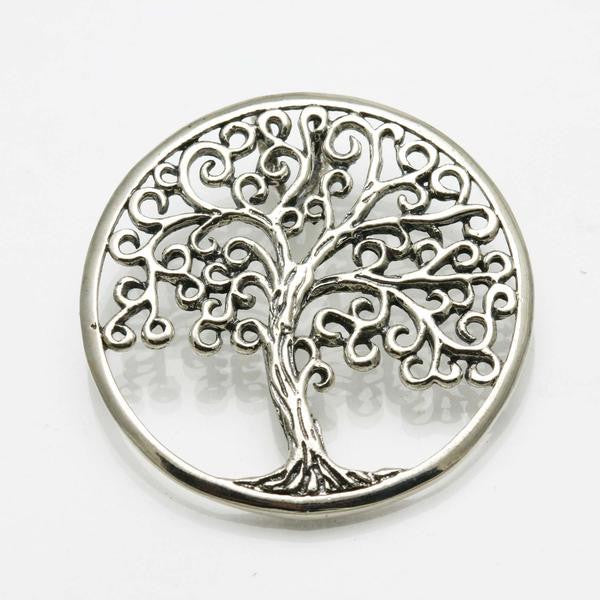
Five More Jewish Symbols You Probably Heard About
There are so many symbols and religious objects in Judaism, it can be hard to keep track. Here are another five you might know something about...
1. Lion of Judah
Each of the twelve tribes of ancient Israel had their own unique symbol. The lion was the symbol of Judah, whose territory included the capital, Jerusalem. From the tribe of Judah came the lineage of King David. After most of the tribes of Israel were lost to the Assyrian conquest, those remaining, mostly comprised of the Kingdom of Judah, began to be known as Jews. Over the millennia, the symbol of the lion, often appearing in pairs, has been used as a design motif on Jewish art and ritual artifacts, including Hanukkah menorahs and Torah cases. It endures today as a Jewish symbol of protection and has more recently been adopted by other cultures, including Rastafarians. The Lion of Judah adorns the crest and flag of the Jerusalem Municipality.
Sterling Silver Lion Ten Commandments Ring
2. Shofar
The shofar is a ritual musical instrument made from a ram’s horn. It is used leading up to and during the Jewish High Holidays during prayer. The shofar, mentioned in the Bible, was used to signal holidays, festivals and even war. Today, the shofar is most commonly associated with Rosh Hashanah, the Jewish new year. Jewish men are obligated to hear the sound of the shofar, live and in person, i.e., a reproduction or recording would not fulfill the religious obligation. The shofar is not blown on Shabbat.
Sterling Silver Shofar Pendant
3. Tree of Life
The concept of a tree of life is one shared by numerous cultures around the world. In Hebrew, it is called Etz Chaim. The tree of life is mentioned in a couple places in the Torah, both in Genesis, in reference to the Garden of Eden, and The Book of Proverbs, which associates it with wisdom and serenity. The symbol of the tree of life is also an allegory for the Torah and the study of Torah.
Sterling Silver Tree of Life Pendant
4. Seder Plate
The Passover seder plate is a symbolic display of foods significant to the retelling of the Passover story at the annual seder meal. This retelling focuses on the Biblical exodus of the Israelites from bondage in ancient Egypt. Some foods used on the seder plate are eaten while others are not. The foods consist of:
Maror and chazeret, bitter herbs such as horseradish or romaine lettuce, symbolizing the bitterness of the Israelite lives under slavery. This is eaten during the seder.
Charoset, a paste typically made from fruits, nuts and wine, charoset symbolizes the brick and mortar made by the Israelite slaves. This is eaten with bitter herbs.
Karpas, a vegetable such as parsley or potatoes, are dipped in salt water and eaten, symbolizing the tears and pain of the Israelites under slavery.
Beitzah, a boiled egg, symbolizes an animal offering to God made during the times of the Jewish Temple. The egg is eaten at the meal, often with saltwater.
Zro’ah, or pascal lamb, is a piece of roasted meat that represents the lamb sacrifice the Israelites made on the eve of the exodus and annually at the Jewish Holy Temple before Passover.
The most iconic seder food, the matzah, is kept on a different plate, either beside or under the seder plate. Three matzot are stacked and covered.
Yellow Gold Seder Plate Pendant
5. Dreidel
The dreidel (Yiddish) or sevivon (Hebrew) is a four-sided spinning top and game associated with the holiday of Hanukkah. Each side of the dreidel has a Hebrew letter on it, forming the acronym for “nes gadol hayah sham,” “a great miracle happened there.” This refers to the miracle of the Hanukkah story of the Jewish victory against the Syrian-Greeks and thereafter rededication of the Jewish Temple and rekindling of the Menorah. In Israel, the acronym was changed to “nes gadol hayah poh,” “a great miracle happened here.”
Interestingly, the dreidel and itself was created a few hundred years ago from a German adaptation of an English gambling game called teetotum. The rules of dreidel are the same, with each letter representing an outcome of the player’s spin. נ – collect nothing, ג – collect everything, ה – Collect half, and ש/פ – put in. To this day, it is a favorite game for Jewish children to play on Hanukkah, usually gambling with chocolate candies.
Sterling Silver Dreidel Pendant







Leave a comment